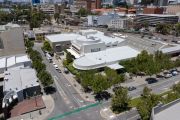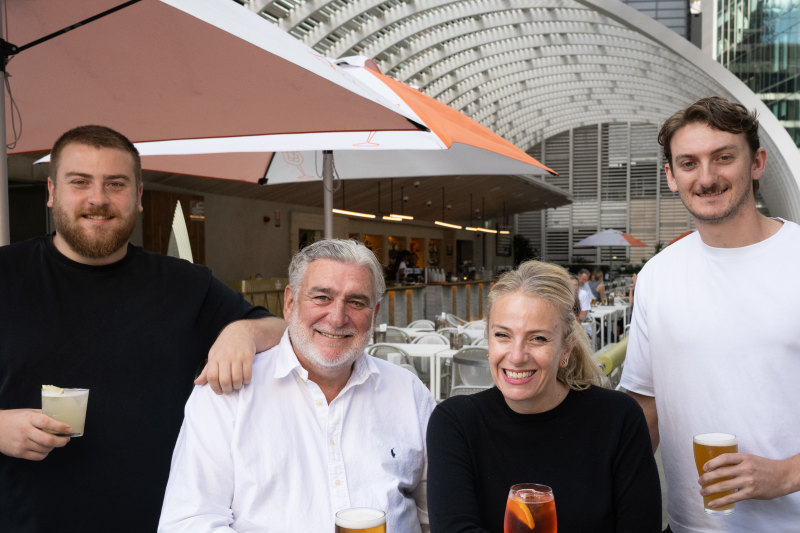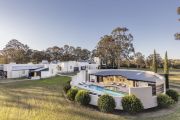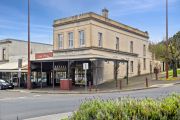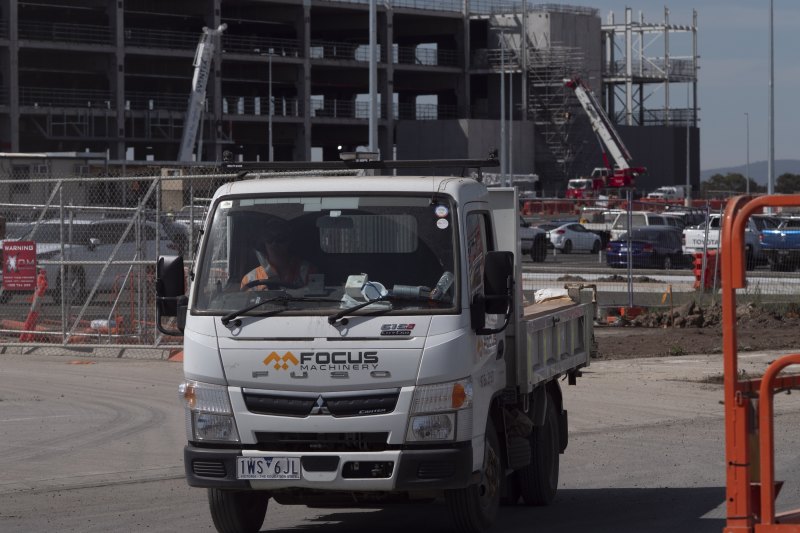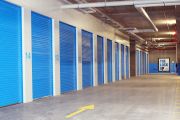
Ambitious design for Pitt St tower wins City of Sydney international design award
A striking new $1.5 billion commercial tower is to be built on one of Australia’s most significant historical sites to highlight its importance both to the local Indigenous people and to Europeans in the early days of the new colony.
Once on the Sydney Harbour shoreline, close to the original Government House, the location is now part of the Sydney CBD after large tracts of land were reclaimed from the sea.
The 50-plus-level tower is planned to be erected on 55 Pitt Street to remind everyone of where the. shoreline originally stood, with greenery throughout, a water feature cascading down six storeys into the foyer, a roof garden of endangered species and a design that opens the building to the elements.
“It will celebrate the history of what it was as it related to the old harbour’s edge and reinterpret it in a 21st century moment,” said William Sharples, a founding principal of New York-based SHoP Architects, which designed the tower along with Australian firm Woods Bagot.
“We’ve had so many conversations about the site, and its historic value and its heritage is something we all focussed on. We’re addressing that on the ground plane within the first 12 metres of a pedestrian coming into contact with the architecture and then we’re taking that expression all the way up the building into the skyline.”
The vision for the Mirvac premium-grade tower close to Circular Quay has just been declared the winner of a City of Sydney international design excellence competition, against five other entries from local and overseas architectural firms, with participants including high-profile competitors Renzo Piano and Herzog & de Meuron.
Plans for the skyscraper, which could be as high as 232 metres with 60,000 square metres of space, are now being seen as a major vote of confidence in the future of commercial office buildings in the city’s CBD.
At a time when so many people continue to work from home and companies are scrambling to renegotiate leases and reconfigure their workspaces, it’s a sign that the major players see the disruption caused by COVID-19 as not sounding the death knell for city offices. Instead, developers say they simply need to work harder on quality to lure workers back to their offices.
“We are so excited about the design,” said Tom Waters, NSW development director commercial at Mirvac, the site’s owner and developer.
“We think we are very optimistic about the future. We believe that, providing you’re supplying interesting and flexible workplaces, people will want to work there, and this building offers tenants the future vision of calmer waters over the horizon.
“People still want to work together and be collaborative and we’re all social animals at the end of the day. There will be a slight adjustment in terms of wanting more flexibility and working, at times, from home, but there’s a core need for really beautiful places and nice environments for people to be able to work together and be social.”
The site’s current occupier, a nine-storey, mid-century office building, will be demolished to make way for the new tower. It will sit on the corner of Pitt Street and Dalley Street, with its back bounded by Underwood Street. Queens Court, which used to be a little cobbled laneway running through the site, will also be restored, with hopes it can be transformed into a lively food and beverage precinct.
With the detailed design work and development applications now to be prepared, and the demolition and excavation work to be done before work can start on construction, it’s hoped the tower will be completed in mid to late 2026.
Woods Bagot previously worked with SHoP Architects on Melbourne’s 447 Collins Street for Cbus Property – a 49,000-square-metre office building which is part of mixed-use development with a 5-star hotel and 200 residential apartments. For the Sydney tower, they looked together at how people now occupy workspaces around the world to ensure they were pursuing international best practice.
“We wanted to push the sense of vibrancy for the public realm and see that go through the framework too,” said Woods Bagot director Domenic Alvaro. “We want to bring people back to work post-COVID, and the priorities were health and well-being and access to fresh air and outdoor spaces.
“We wanted to have high levels of flexibility and to push the idea of a place of creation and socialisation and teamwork, in a beautiful environment with greenery, fresh air and naturally ventilated spaces. A lot of our thinking was also based around the Indigenous cultural heritage of the area and performance and authenticity of expression.
“We carved an entrance that’s almost a sea cave that’s welcoming and embedded in nature with large trees, plants, a waterfall in the lobby and ceilings that provide almost a protected sanctuary with carved tidal water sculptures sitting on ceilings.”
It’s too early yet for an anchor tenant to be signed up, but the word has gone out about the new tower to anyone who has less than 10 years left to serve on their current leases, to see if they might be interested in coming over.
“I think a lot of companies don’t know what their workforce requirements are going to be yet, and that’s totally fine,” said Mr Waters. “The key thing is flexibility and adaptability and they’ve got the next few years to figure out what they might need so we can fit out the space to suit their needs.”
A lure of a new building over old is that there are things you can do now that would be very expensive – or impossible – to do in retrofit, such as efficient and fast lift systems, more fresh air and better airconditioning, and higher floor-to-floor heights to let in more natural light.
Mr Waters hopes it will strike a chord with all Sydneysiders.
“We wanted this to be a development that’s not a trophy from a signature architect, but to really respect the place that belongs to Sydney, and have a narrative of place woven through the building,” he said. “It’s for the people and workers of Sydney to enjoy.”
